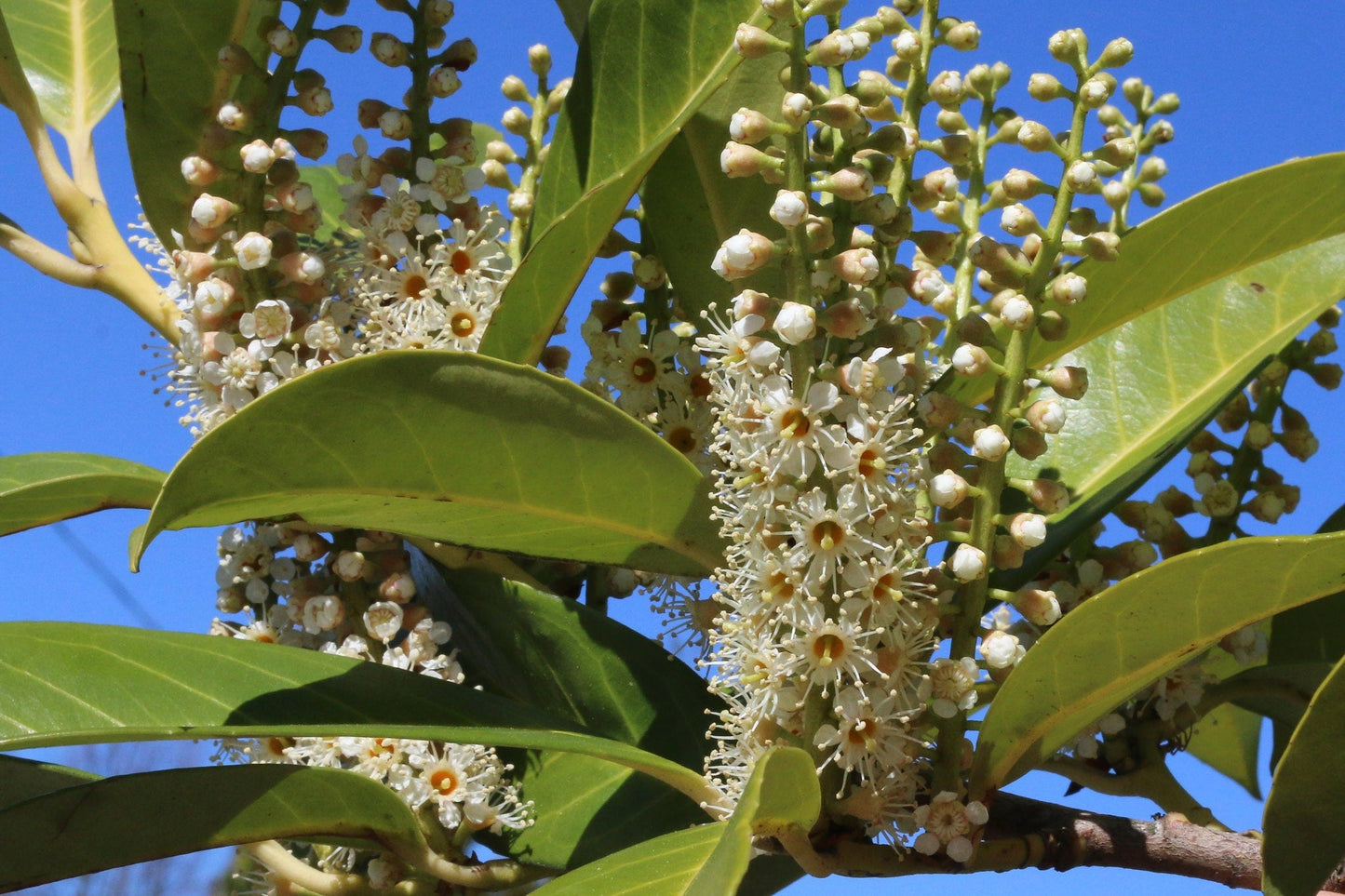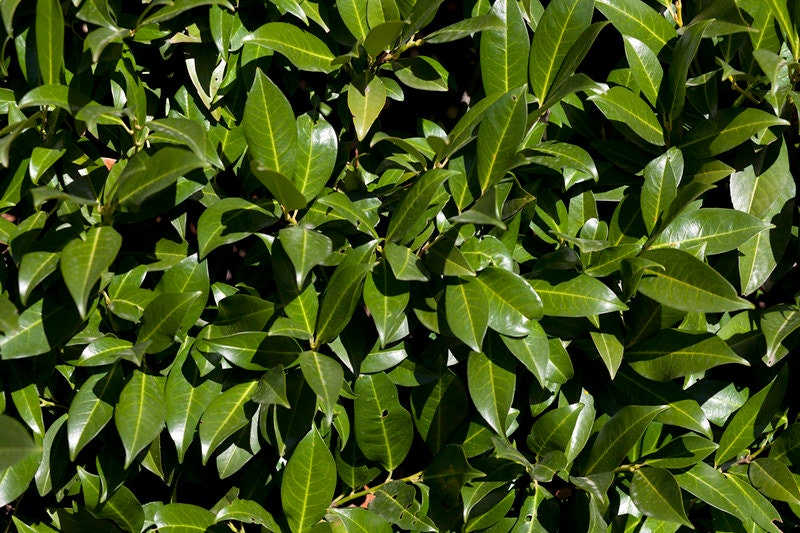R&B Floridaseeds
Cherry Laurel Prunus laurocerasus 10 Seeds USA Company
Cherry Laurel Prunus laurocerasus 10 Seeds USA Company
Couldn't load pickup availability
Prunus laurocerasus, commonly known as English laurel or cherry laurel, is a species of evergreen shrub or small tree in the Rosaceae family. It is native to regions of southwestern Asia and southeastern Europe. English laurel is popular for its lush, glossy foliage and is commonly used as an ornamental plant in gardens and landscapes.
Appearance: English laurel typically grows to a height of 10 to 30 feet (3 to 9 meters) and has a dense, rounded canopy. The leaves are dark green, leathery, and shiny, measuring around 2 to 6 inches (5 to 15 centimeters) long. They are elliptical or lance-shaped with serrated margins.
Flowers: In late spring to early summer, English laurel produces fragrant, small white flowers arranged in upright clusters known as racemes. The flowers are attractive to pollinators like bees and butterflies.
Fruits: After flowering, the shrub produces small, cherry-like fruits that are green when young and turn black as they ripen. These fruits are not edible and can be toxic if ingested, so it's essential to keep them away from children and pets.
Habitat: Prunus laurocerasus is adaptable to various growing conditions and is often found in woodlands, along roadsides, and in ornamental plantings. It prefers well-draining soils and can tolerate both full sun and partial shade.
Uses: English laurel is a popular choice for hedging, screening, and as a background plant in gardens. Its dense growth and evergreen foliage provide privacy and year-round greenery.
Growing Instructions
Seed Stratification: Prunus laurocerasus seeds benefit from cold stratification to improve germination rates. To do this, place the clean seeds in a container with a moistened substrate such as vermiculite, peat moss, or damp paper towels. Seal the container and store it in the refrigerator for about 90 to 120 days. This cold stratification mimics the winter conditions that the seeds would naturally experience.
Seed Planting: After the stratification period, remove the seeds from the refrigerator and sow them in pots or seed trays filled with a well-draining potting mix. Plant the seeds about 1/4 to 1/2 inch (6 to 12 millimeters) deep in the soil.
Watering: Keep the soil consistently moist but not waterlogged. Water from the bottom to avoid dislodging the seeds or burying them too deep in the soil.
Germination: Place the containers or seed trays in a warm location with indirect sunlight. Germination may take several weeks to months, so be patient and continue to provide appropriate care.
Transplanting: Once the seedlings have developed a few sets of true leaves and are large enough to handle, transplant them into individual pots. Continue to grow the seedlings indoors for the first year or until they are well-established.
Outdoor Planting: After the first year or when the seedlings are strong enough, you can consider transplanting them outdoors into their permanent location. Choose a spot with well-draining soil and provide some protection from harsh sunlight until the plants become more established.
Materials
Materials
Shipping & Returns
Shipping & Returns
Dimensions
Dimensions
Care Instructions
Care Instructions
Share










